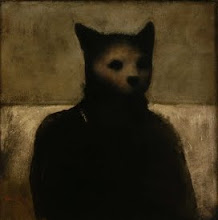
I am not one who believes a martial artist needs to be ambidextrous when it comes to technique.
No doubt, it is a commendable goal, and I think everyone should train hard to learn defenses on both sides, but learning to work one's strong side is also a practical goal.
That said, most will discover that there are strengths inherent to the weaker side, too, or rather, techniques that come easier when utilizing the less dominant hemisphere of the brain. In randori, for example, I find myself having different "go-tos" depending on the side or angle the attack comes from. The important thing, really, is that there exists a confident reaction either way.
But an aspect of this subject that is less discussed, and equally valuable when it comes to training both sides, is brain function. As the left hemisphere of the brain is largely responsible for the right hand's actions, training the left hand to become dominant in a technique should activate and stimulate areas of the brain used on a less frequent basis. This will, in my far-from-scientifically educated wisdom, create new neural pathways, and serve to expand one's cerebral abilities. (It's just like the theory whereby doing crosswords is supposed to be good for your cognitive longevity).
Anyway, by activating the less frequently used parts of your brain the results may not be just better technical abilities, but perhaps more creative and intuitive talent as well (the right brain is often associated with more creativity).
Likewise, when we break down techniques or art forms different from our own, the brain will have to leave its comfort-zone and reconstruct patterns of thought to make sense of the new data it receives. This should generate more neural expansion.
My theory is that such growth will allow the artist to think about and discern situations in a less limited manner.
And this, invariably, is a good thing.

My Takeuchi-ryu sensei was a big proponent of this. He encouraged us to work with both sides of the body, not simply to become for proficient budoka, but also to be better thinkers.
ReplyDeleteHe credited Miyamoto Musashi with having this understanding, which led not only to his two-sword style, but also to his later ability of painting with both hands at once.
Great post, as was the previous one about Qi energy.
ReplyDeleteTraining both sides should always be part of your training. As you've mentioned, it's good for mind and body.
Strong side versus weak side can be a bit of a misnomer. I'm a better blocker with my 'weak' side, usually in anticipation of my follow up. So is my weak side strong, and my strong weak? Depends on what's being done.
Perhaps just pondering this has been a good exercise in mental flexibility.